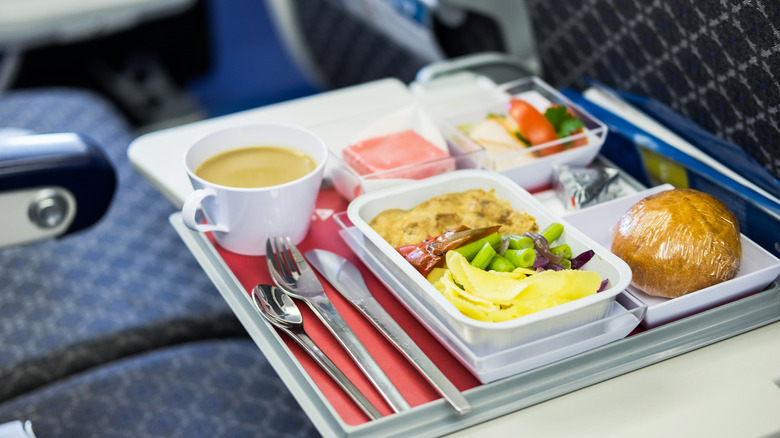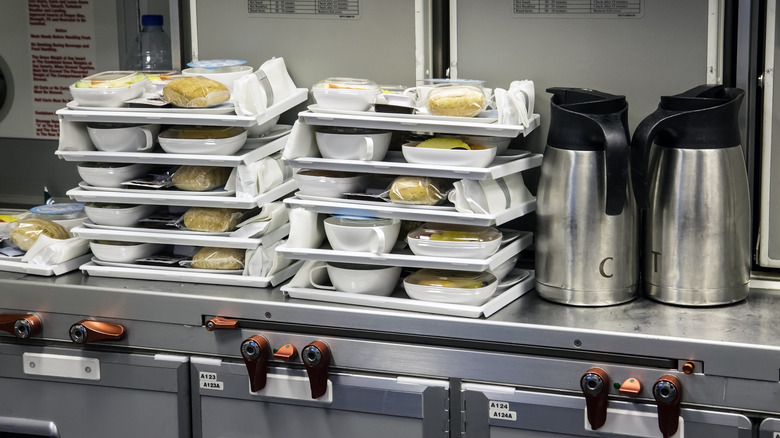The Reason Food Tastes Different On An Airplane
Airline food gets a bad rap. Consider the challenges. On a flight with full meal service (as opposed to pre-packaged pay-per-item snacks), the cabin crew doesn't have access to a full kitchen. Instead, they have to dance around one another in a tiny galley while preparing food for a plane-load of hungry passengers. They aren't working with fresh ingredients. They're heating and serving hundreds of mass-produced meals. It's even challenging in the first-and business-class cabins where, admittedly, there's more space, fewer passengers, more restaurant-like food choices, and a curated wine list.
In 2015, BBC reported food safety protocols dictate that all meals served to airline passengers must be cooked on the ground, blast-chilled, and refrigerated before being loaded onto the flight. Thrillist reports most airline meals are prepared up to 10 hours before they hit passengers' tray tables. When meal service commences, the flight crew reheats the food in the galley. Open flames are prohibited and, while some planes are equipped with microwaves, it's not the norm. Convection ovens that circulate hot, dry air are the most common means of reheating in-flight meals, but they bring their own challenges, including the potential to dry out the food (via Simple Flying).
"Many times the final product is not what was originally envisioned due to things outside their control," Russ Brown, former director of food and beverage for American Airlines, told BBC. "We design food with ingredients and packing we know can survive the long process between food preparation and delivery."
If it's not one thing, it's another
Even the most meticulous menu planning can't completely mitigate the environmental factors that affect how passengers experience food on an airplane. "Food and drink really do taste different in the air compared to on the ground," Charles Spence, professor of experimental psychology at Oxford University, told BBC. "There are several reasons for this: lack of humidity, lower air pressure, and the background noise."
The first thing to go, according to BBC, is the sense of smell. Humans need hydrated nasal passages to experience scent. The air outside a plane at altitude is dryer than air at ground level. Aircraft air filtration systems draw air from outside to circulate through the cabin, so cabin humidity can gradually drop to as low as 20%, compared to the average human comfort level of 30% to 65% (via AeroCorner).
The result, according to a study by Germany's Fraunhofer Institute for Building Physics, is a diminished capacity to experience sweet and salty foods (via The Wall Street Journal). Even noise level can affect passengers' ability to detect flavor. BBC cites a study linking noise to an inability to accurately rate sweet and salty flavors. Still, there's hope. Airlines take the challenge of producing tasty in-flight food seriously. Sous-vide, a method of cooking sealed bags of food by immersing the bags in hot water, is showing promise and Singapore Airlines develops and tests recipes in a purpose-built simulated aircraft cabin.

